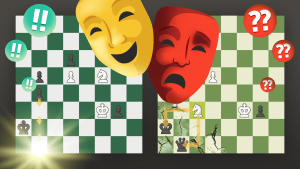Botvinnik's Legacy. Part Two.
Today we'll discuss a powerful opening/middlegame set up called the Maroczy Bind. The following diagram shows a typical Maroczy Bind pawn chain.
To tell you the truth, I don't know where this name came from since I was not able to locate one single game where the famous Hungarian GM Maroczy showed the restricting power of the c4 and e4 pawns. In fact it was Michail Botvinnik who turned this quiet positional idea into a lethal weapon. The initial idea of the set up was just to restrict Black's possible breaks (b7-b5 or d6-d5). But Botvinnik found that if White achieves the ideal placement of his pieces shown in the next diagram and plays Nc3-d5 then Black starts experiencing some serious problems.
Let's see what Black's options are and why all of them lead to some sort of a problem.
1) Black just kicks the Nd5 by playing e7-e6. Of course it solves the problem of the annoying Nd5, but in return Black gets the weak d6 pawn on the open 'd' file. All White needs to do is to pile up his heavy pieces on the 'd' file and Black will have troubles defending his chronic weakness on d6.
2) Black just does nothing and tolerates the Nd5. In this case Black is really doomed because of White's monstrous centralization and Black's total lack of counter play. The following Botvinnik games show how White should proceed in this case. (Please notice that Botvinnik liked this set up so much that he tried to get it with both White and Black!)
3) Black's last option is just to capture the Nd5. In this case White recaptures with his e4 pawn and Black ends up with the backward 'e7' pawn. White then regroups his pieces to pile up against Black's new weakness. The next game is quite typical for this scenario.
Personally I was so impressed with the simple and logical play in this powerful set up, that I always wanted to emulate one of the great Botvinnik's masterpieces. The next game is a very good proof of the well-known saying that knowledge is power. Just compare it to the above-mentioned game Lisitsin-Botvinnik and you will see how easy it was for me to play just by implementing all of Botvinnik's ideas.
After seeing all these games, I hope you, my dear readers, would understand why I believe this set up should have been called Botvinnik's Deadly Bind!

